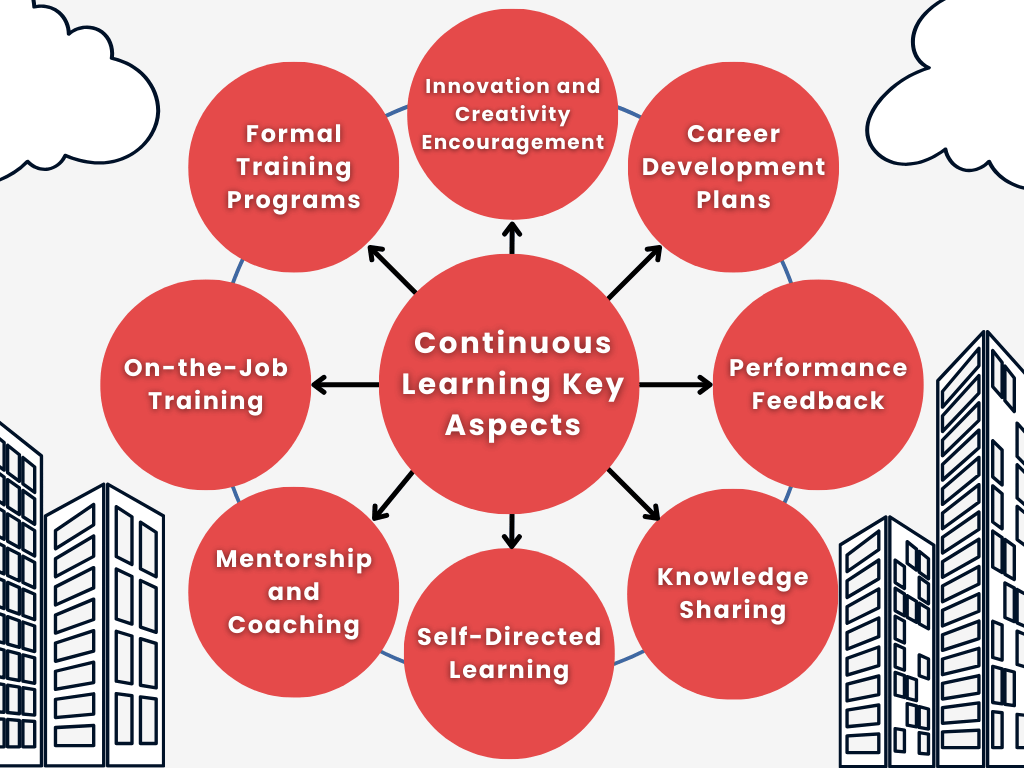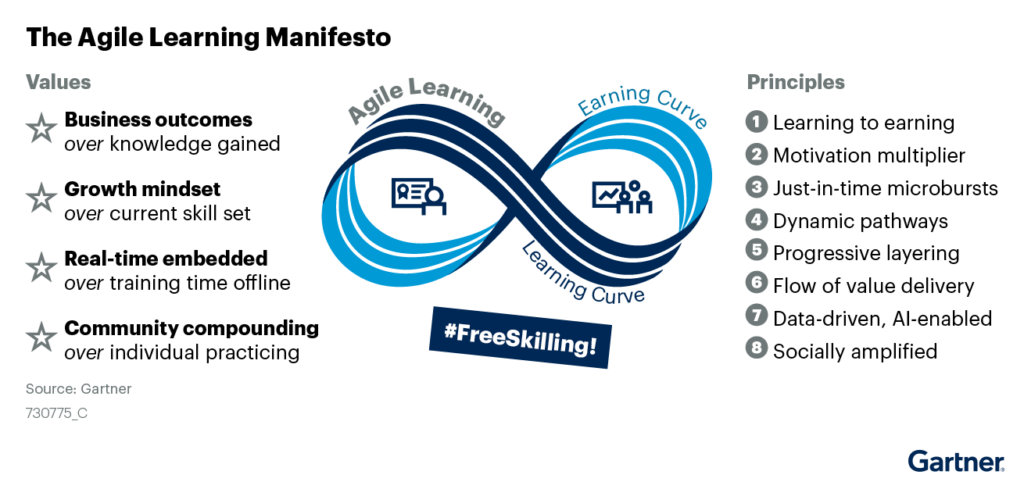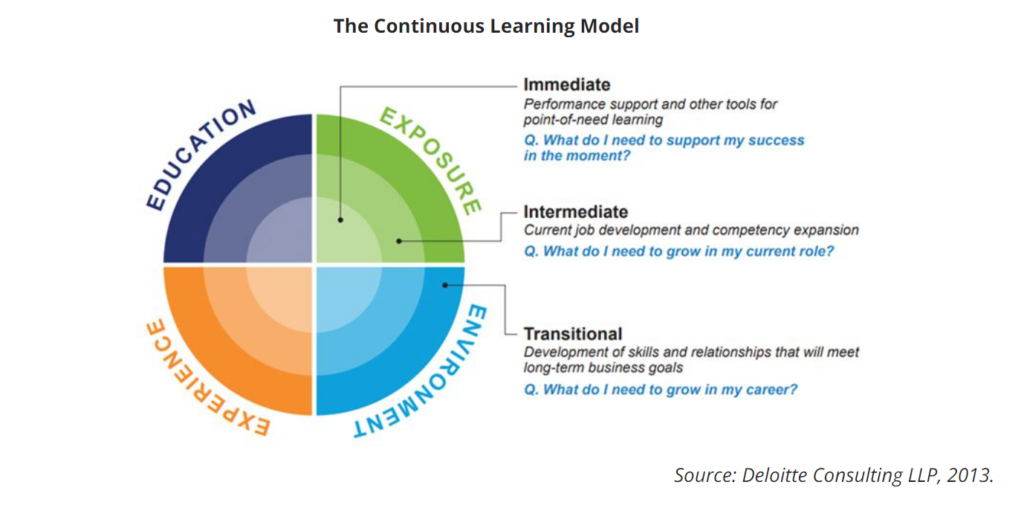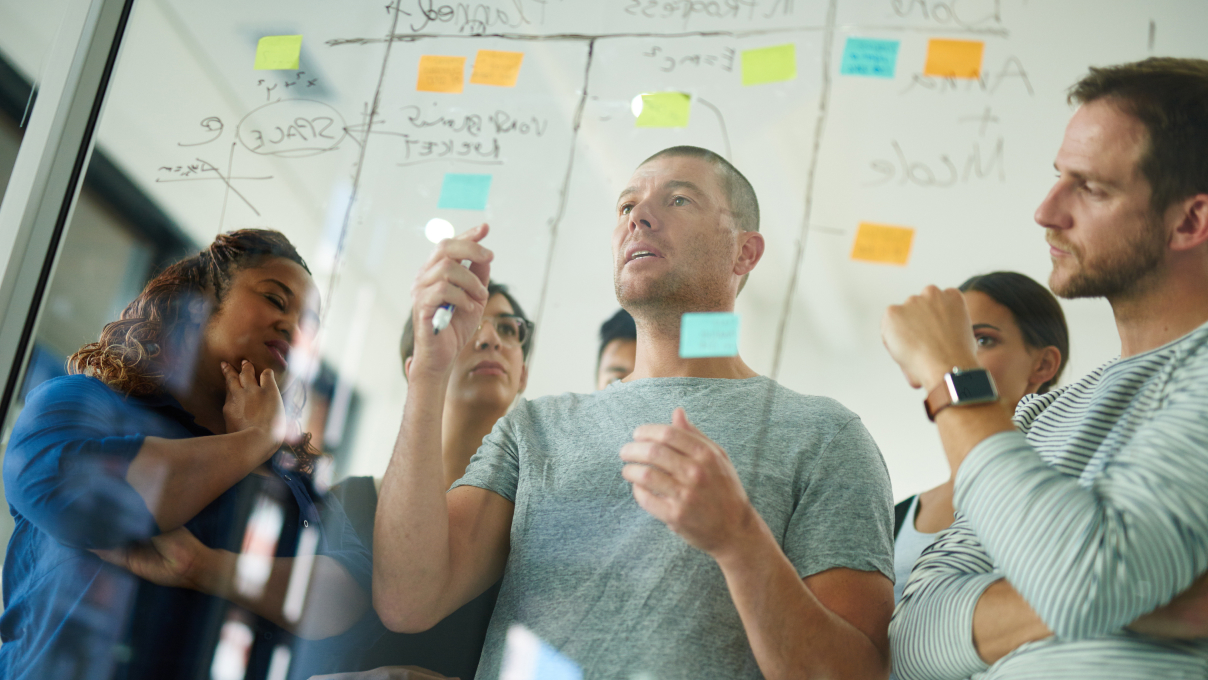Continuous learning has become increasingly prominent in the learning and development (L&D) community. While the concept itself isn’t new, the dynamic nature of modern business and the constant need for skill updates have brought it back into focus.
This renewed emphasis on continuous learning underscores its critical role in meeting the evolving demands of today’s workplace. As HR leaders navigate the future of work and strive to engage employees, they recognize the importance of L&D in their strategies.
Creating effective training parameters and cultivating a culture of continuous learning are now key priorities for L&D and HR leaders. Therefore, this article focuses on building a continuous learning environment in the organization and gives some practical advice on how to do so.
What is Continuous Learning?
Experts define continuous learning as a self-initiated, optional, planned, and proactive pattern of activities sustained over time. It’s a process that is integral to the success of any organization and where one’s commitment to it is highly valued.
In the labor market, CL refers to an ongoing process where employees take the initiative to consistently seek new skills, knowledge, and competencies to adapt to changing job requirements and business environments.
It encompasses a variety of activities and strategies designed to ensure that employees remain proficient and competitive.
Key Aspects of Continuous Learning
- Formal Training Programs – Structured courses, workshops, and seminars, both in-person and online, aimed at enhancing specific skills or knowledge areas.
- On-the-Job Training – Practical training that occurs in the workplace, allowing employees to learn while performing their regular job duties.
- Mentorship and Coaching – Experienced employees or external coaches provide guidance to support personal and professional development.
- Self-Directed Learning – Employees taking the initiative to learn new skills or knowledge through online courses, reading, attending industry conferences, or pursuing certifications.
- Knowledge Sharing – Creating a culture where employees regularly share information and expertise through team meetings, internal forums, and collaborative projects.
- Performance Feedback – Regular feedback sessions that help employees identify areas for improvement and develop action plans for growth.
- Career Development Plans – Personalized plans that outline an employee’s career goals and the steps needed to achieve them, including training and development opportunities.
- Innovation and Creativity Encouragement – Creating an environment where employees are encouraged to think creatively, experiment, and innovate as part of their learning process.

How Can Organizations Benefit From Adopting Continuous Learning?
Continuous learning provides numerous benefits that enhance both individual and organizational performance.
- By helping employees improve their skills, continuous learning leads to better job performance and productivity.
- It equips employees to adapt more effectively to new technologies, processes, and industry changes, ensuring they stay current and competent. Organizations that invest in their employees’ development often experience higher retention rates, as employees feel valued and invested in.
- A culture of continuous learning fosters creativity and innovation, encouraging employees to bring fresh ideas and solutions to the table. This culture also positions organizations to stay ahead of competitors by maintaining a more skilled and knowledgeable workforce.
- Opportunities for learning and growth significantly increase job satisfaction and employee engagement, contributing to a more motivated and committed workforce.
How to Create a Culture of Continuous Learning?
In her interview for an HR Exchange Network, Sonia Malik, Global Program Lead, Education and Workforce Development at IBM, suggests several ways to achieve this: implement an LMS, direct leaders and managers towards continuous learning, and link the Gartner’s agile learning curve with the earnings curve, i.e. financial motivation. Let’s take a closer look at them now.
Implement LMS
One of the most important is providing infrastructure and opportunities for lifelong learning, which is best and most fully enabled by implementing a comprehensive Learning Management System (LMS) in the organization. You can’t say you want employees to learn continuously without also providing them with access to infrastructure, content, or time to learn.
HR leaders must understand that traditional training is often too slow, costly, and location-dependent to effectively address the shifts in the future of work. Agile learning practices offer a faster, more affordable, and more efficient alternative. You can learn more about the LMS benefits in the continuous learning approach from this video:
The second way is for leaders to demonstrate a growth mindset and lifelong learning behaviors. For this purpose, managerial employees and the HR department should be prepared and regularly trained in this direction. To cultivate a culture of agile learning, HR and L&D leaders can:
- inspire employees to transition from a passive stance of waiting for learning to occur to an active pursuit of learning opportunities,
- establish an environment that supports and energizes this proactive learning mindset,
- ensure employees practice continuous learning and have a solid foundation in soft skills.
In this way, they prepare people for the future, and employees will be adaptable, resilient, creative thinkers and focused on solving new problems.
Link The Agile Learning Curve With The Earnings Curve
Another way to create a culture of continuous learning in your organization is to clearly demonstrate why it’s worth learning. It is useful to link a learning curve to the earnings curve. Recognition should be provided, allowing them to develop and motivate them to expand their knowledge and improve their competencies constantly.
Leaders must reward and motivate employees, primarily financially, but not only. As Malik suggests, at IBM each employee must complete at least 40 hours of education in one year. For each additional amount of hours devoted to learning, employees receive rewards provided for in the motivational program.
Malik points out that linking the agile learning curve to the earnings curve and personalizing the learning path for individuals are the keys to establishing a culture of continuous learning.

As the above diagram shows, learning connects learning curves with earning curves.
Example of a Continuous Learning Model
Are you looking for a strategy for implementing CL in your organization? You can facilitate the task with ready CL models. An example is the model created by Deloitte, which is based on 4 pillars (learning paradigms), named “four ES”: Education, Experience, Exposure, and Environment.

The model defines and describes the approach to continuous learning, and each organization can adapt it to its own needs. Its aim is to help organizations meet employees’ direct, indirect, and transitional needs. At the same time, this model was designed to facilitate a comprehensive approach to development using various learning paradigms.
3 Types of Employees’ Learning Needs
The above continuous learning model classifies employees’ learning needs into three main categories (depicted as circles in the scheme):
- Immediate – The innermost circle represents an approach where all employees, regardless of their position or tenure, need access to information that helps them perform their job functions. This category is designed to provide answers when and where employees need them.
- Intermediate – The second circle focuses on learning elements that help employees develop their current roles and expand their competencies. This includes developing individual career interests, gaining skills, and receiving guidance to make the business more efficient and effective.
- Transitional – The outermost circle represents the learning elements to prepare employees for long-term business goals or significant transitions, such as new roles or career shifts. This area includes activities that increase skills, develop competencies, and build relationships for future transitions.
Remember: the circles in Deloitte’s model do not indicate skill level. As the model’s authors emphasize, while employees at higher management levels may find more of their development activities in the outer circle, most employees should regularly jump between all circles.
4 Continuous Learning Contexts
As we know, much of learning takes place outside formal programs. Employees supplement their practical knowledge primarily through everyday work and various experiences, but also through scientific and development activities. Therefore, the designers of this continuous learning model took this into account and divided learning into four contexts, called the “four Es”:
- Education includes traditional research and development activities such as classroom training, e-learning, and simulations. These activities have a clear beginning and end and are often tracked as events.
- Experience – Learning in this category takes place directly on the job. Examples include flexible assignments, job rotation, and special projects that allow employees to learn by doing.
- Exposure – Involves learning through interactions and relationships. Employees develop by connecting with others through professional conferences, community volunteer opportunities, communities of practice, and coaching or mentoring activities.
- Environment – includes the tools and systems employees use to learn or support their work. Examples include information systems, search engines, job aids, productivity tools, and online resource libraries. Meeting needs in this context requires keeping information current, complete, accessible, and consistent, as well as understanding where students will use their skills.

Adopting Continuous Learning
Your organization can adopt a continuous learning approach by combining coursework with various elements that encourage employees to learn in multiple ways. You should refocus on enhancing the learner experience, ensuring it is both appealing to employees and fits seamlessly with their daily responsibilities.
Collaboration with other stakeholders is essential, and your organization should trust these stakeholders to contribute to the learning process. It is also important to relinquish some control over what and how learning is measured, empowering employees to find ways to increase and share their knowledge within the organization.
Securing buy-in and support for continuous learning from key stakeholders will help build a robust foundation. So make sure your organization considers all available development activities and tailors learning paths to align with employee interests and business needs.
Lastly, understanding and exploring how the four contexts of learning – education, experience, exposure, and environment – can shape and enrich the learning experience for the workforce is crucial.











